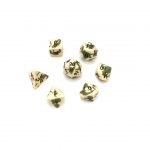Mastering the Bard Quick Build for D&D: Tips & Tricks for Beginners
The Bard is one of the most versatile and exciting classes in Dungeons & Dragons. Whether you’re a seasoned adventurer or just starting your journey in the world of tabletop games, building a Bard can be both fun and rewarding. This guide will walk you through a quick build for a Bard, complete with tips and tricks to help you shine in any campaign.
Step 1: Choose Your Race
Your character’s race can significantly impact their abilities and role within the party. For a Bard, races that offer a boost to Charisma are particularly beneficial. Here are some excellent choices:
- Half-Elf: With a +2 bonus to Charisma and two additional +1 bonuses to other abilities, Half-Elves are a top pick for Bards.
- Tiefling: Tieflings also get a +2 Charisma boost and come with some innate spellcasting abilities that complement the Bard’s skill set.
- Human (Variant): The Variant Human allows for a +1 bonus to two abilities and a feat at level one, offering great flexibility.
Step 2: Assign Ability Scores
For a Bard, Charisma is your most crucial ability score, as it affects your spellcasting and many of your class features. Here’s a suggested priority for assigning your ability scores:
- Charisma: Your primary ability for spellcasting and performance skills.
- Dexterity: Important for your Armor Class (AC) and initiative.
- Constitution: Ensures you have enough hit points to survive in battle.
- Wisdom: Useful for perception and insight checks.
- Intelligence: Helps with knowledge-based skills.
- Strength: Usually the least important for a Bard.
Step 3: Choose Skills and Background
Bards are known for their versatility and skill proficiency. When selecting your skills, consider the following:
- Performance: A must-have for any Bard.
- Persuasion: Essential for social interactions.
- Acrobatics or Stealth: Depending on your playstyle, these can be very useful.
- Perception: Always a good choice for spotting hidden dangers.
For your background, the Entertainer is a thematic and practical choice, granting proficiency in Acrobatics and Performance, as well as additional equipment and a feature that lets you find a place to perform.
Step 4: Select Equipment
When it comes to equipment, make sure you have the essentials:
- A musical instrument: The Bard’s iconic tool.
- Light armor: Leather armor is a good starting point.
- A rapier or shortsword: For close combat.
- Spellcasting focus: Such as a wand or a component pouch.
Step 5: Choose Spells
Bards have access to a wide array of spells. For a quick build, consider the following:
- Cantrips: Vicious Mockery, Mage Hand.
- 1st-level spells: Healing Word, Charm Person, Faerie Fire.
Tips and Tricks for Beginners
Now that you have your Bard ready, here are some tips to help you make the most out of your character:
- Embrace Your Versatility: Bards can fill many roles in a party. Whether you need to heal, buff, debuff, or deal damage, you have spells and abilities that can handle it all.
- Use Your Inspiration Wisely: Bardic Inspiration is a powerful tool. Use it to bolster your allies during crucial moments.
- Stay in Character: Roleplaying a Bard can be incredibly fun. Lean into your character’s charisma and charm to enhance your group’s experience.
- Experiment with Spells: Don’t be afraid to swap out spells as you level up. Find what works best for your playstyle and party needs.
- Keep Learning: The more you play, the more you’ll understand the nuances of being a Bard. Don’t be afraid to ask for advice from more experienced players or Dungeon Masters.
Building a Bard in D&D can be an exciting and rewarding experience. With these tips and tricks, you’ll be well on your way to becoming the life of the party, both in and out of character. So grab your lute, warm up your vocal cords, and get ready to charm your way through your next adventure!
Author: Victor Dixon
-
Necromancer Ceramic Dice Set
Select options This product has multiple variants. The options may be chosen on the product page -
Ancient Oasis Ceramic Dice Set
Select options This product has multiple variants. The options may be chosen on the product page -
Fireball Ceramic Dice Set
Select options This product has multiple variants. The options may be chosen on the product page



